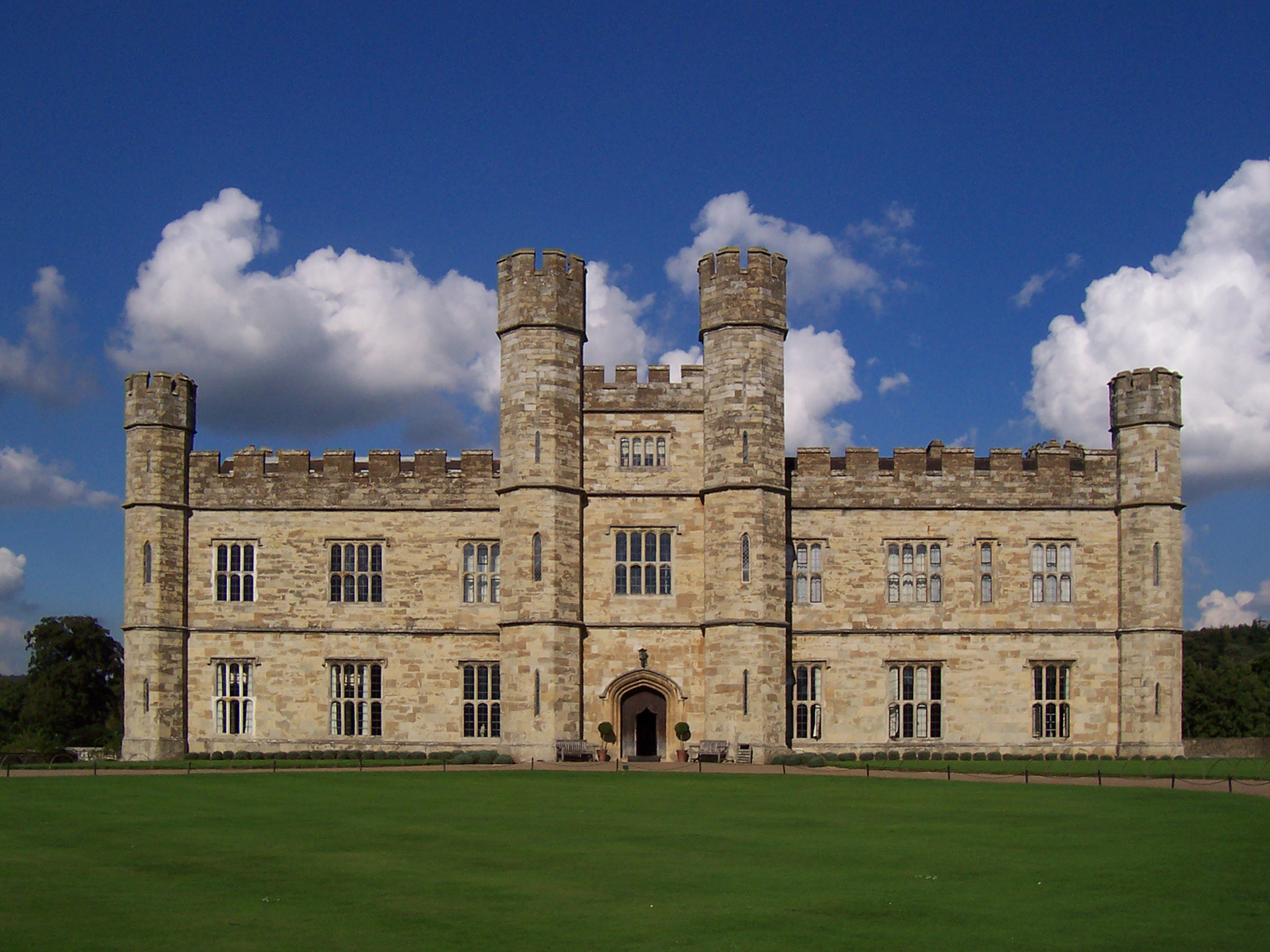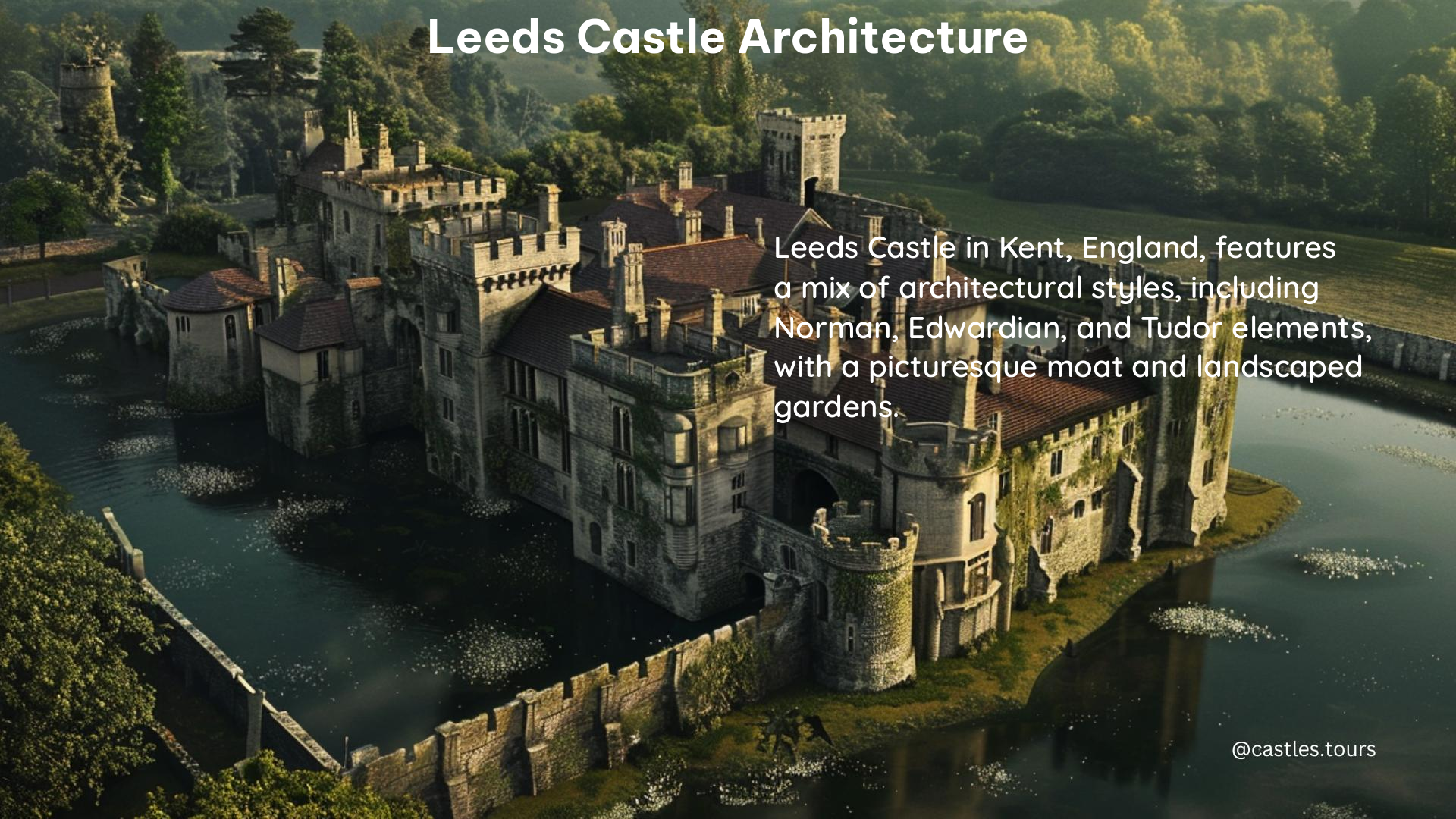Leeds Castle, located in Kent, England, is a stunning medieval castle that boasts a rich architectural heritage. From its Norman roots to the Tudor and Gothic Revival influences, the castle’s architecture is a captivating blend of styles that has evolved over the centuries.
Architectural Styles

The castle’s architectural style is primarily a mix of Norman, Tudor, and Gothic Revival styles, reflecting the diverse tastes and preferences of its various owners throughout history.
Norman Architecture
The castle’s origins can be traced back to the Norman era, with the initial construction of the castle in 1119 by Robert de Crevecoeur. During this time, the castle was built primarily with wood, which was later replaced with stone.
Tudor Architecture
In the 16th century, the castle underwent significant transformations during the reign of Henry VIII. The king transformed the castle to accommodate his first wife, Catherine of Aragon, incorporating Tudor-style furnishings and paintings.
Gothic Revival
The castle’s Gothic Revival style is particularly evident in the work of Armand-Albert Rateau, who was commissioned by Lady Baillie in the 1920s to create a glorious Gothic fantasy within the castle’s walls.
Notable Architectural Features

Leeds Castle boasts several notable architectural features that contribute to its unique character and historical significance.
The Gloriette
The Gloriette is the castle’s highlight, featuring Tudor-style furnishings and paintings. It was built for Queen Catherine and includes the Queen’s Room, Queen’s Bathroom, and Queen’s Gallery.
Banqueting Hall
The Banqueting Hall is an impressive structure measuring over 73 feet long, containing essential paintings, sculptures, and the earliest known Enghien tapestry.
Maiden’s Tower
The Maiden’s Tower houses a dog collar museum and is built on the courtyard between the gatehouse and New Castle, leading to the Gloriette.
Barbican
The Barbican, constructed during the reign of Edward I, is unique in that it consists of three parts, each with its own entrance, drawbridge, gateway, and portcullis.
Materials and Construction Timeline
The castle’s construction and materials used have evolved over the centuries, reflecting the changing architectural styles and preferences of its owners.
Materials Used
The castle was initially built with wood and later replaced with stone in 1119. The stone used was likely local limestone and flint, common in Kent.
Timeline of Construction
- 1119: The castle was rebuilt in stone by Robert de Crevecoeur.
- 1278: King Edward I made significant improvements, including the construction of the Barbican.
- 1519: Henry VIII transformed the castle for his first wife, Catherine of Aragon.
- 19th century: The castle was extensively repaired and remodelled in a Tudor style, completed in 1823.
- 1920s: Lady Baillie commissioned architects Owen Little and Armand-Albert Rateau to recreate a largely medieval castle, incorporating Art Deco and Gothic Revival elements.
Visitor Information
Leeds Castle is a popular tourist destination, offering visitors a glimpse into its rich architectural history.
Opening Hours and Admission Prices
- Opening Hours: Leeds Castle is open daily from 10:00 AM to 6:00 PM (last admission at 4:30 PM).
- Admission Prices: Prices vary depending on the time of year and type of ticket. A standard adult ticket costs around £28.50.
Location and Contact Details
- Location: Leeds Castle is situated 7 miles southeast of Maidstone, Kent, England.
- Phone Number: +44 1622 765400.
- Directory: Leeds Castle, Maidstone, Kent, ME17 1PL, England.
Conclusion
Leeds Castle’s architecture is a captivating blend of styles, reflecting the castle’s rich history and the diverse tastes of its owners. From its Norman roots to the Tudor and Gothic Revival influences, the castle’s architectural features, materials, and construction timeline make it a must-visit destination for castle enthusiasts and history lovers alike.
References:
– Leeds Castle: A Great Castles Guide
– Leeds Castle: An Ancient Fortress
– The History of Leeds Castle
– Leeds Castle on Wikipedia
– Official Leeds Castle Website
